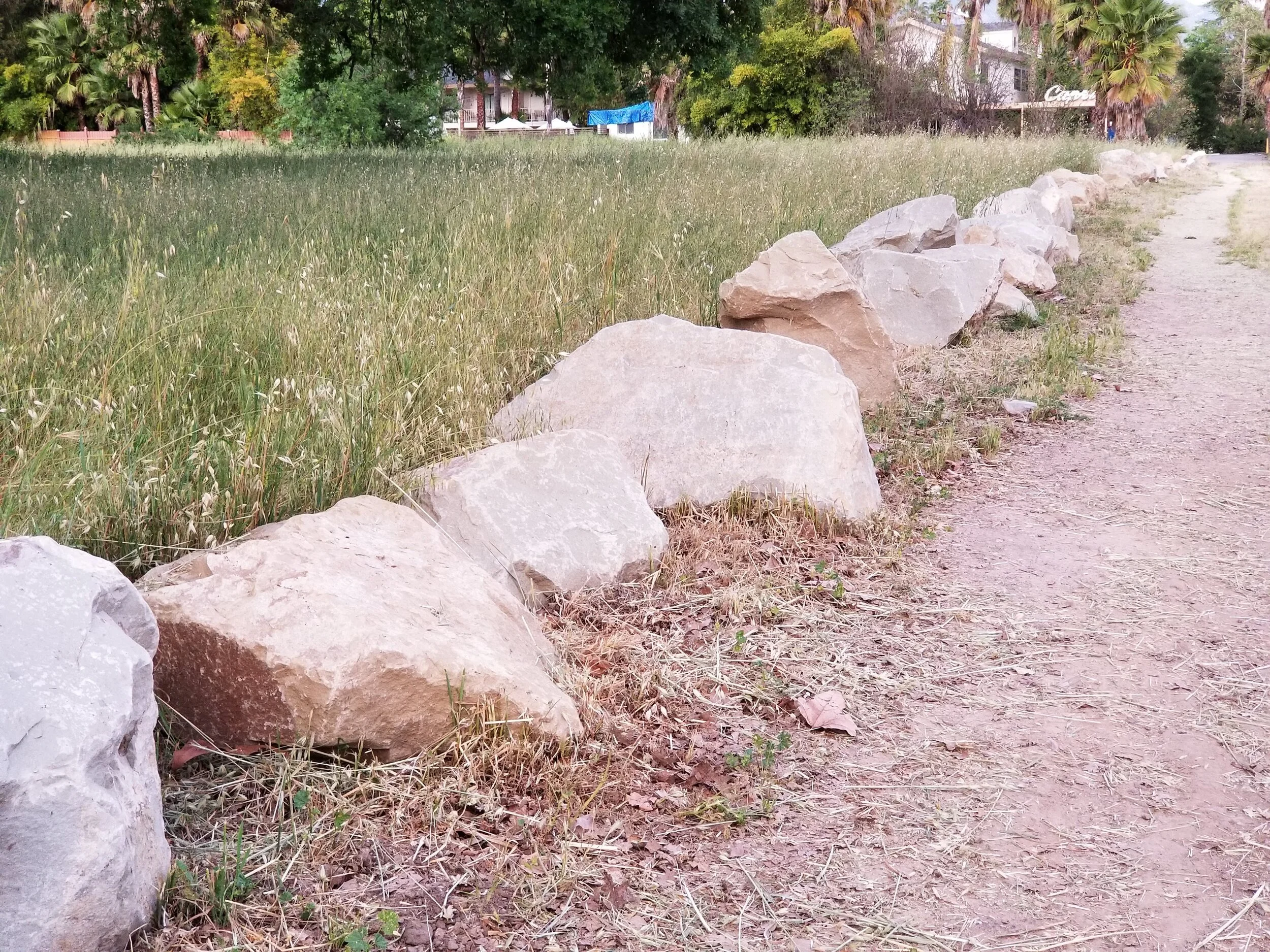Threshold Spaces: Rethinking Eleven Figures during Quarantine at Atkinson Gallery
How we view art depends on the experiences we bring to it. In the months leading up to Covid-19’s insertion into every aspect of the California quotidian, Santa Barbara City College’s Atkinson Gallery held an ambitious two-part exhibition featuring eleven Southern California artists working in figurative representation. Much of Eleven Figures in Two Parts was an exploration of figurative, psychological and social constructs of the human form; however, by opening night of the second part, our collective view of the human body had already begun to shift.
A stunning example is Mario Ayala’s “Mending Acquaintances” which depicts a crash-test dummy covered in warning symbols of an infectious disease. At the Feb. 21 opening, the 2019 piece was a clear presage to Covid-19. Months prior, the chain link fence referencing detention centers or the “black face” mask questioning the basis of racial tensions might have struck viewers first. However, on that night, there was no more salient news than the growing confusion around Covid-19.
ABOVE: Brian Calvin, Split Composition, 2019; Overlook, 2017; Soft Focus, 2017; Little Longneck, 2017/2018; BELOW: Manjari Sharma, Untitled, from the series Surface Tension, 2019.
Perhaps even more prescient is the way Ayala’s “infected body” is depicted taking off its mask. In the weeks that followed, Covid-19’s stealth incubation period had many begin to adopt a similar mode of thinking: everyone you meet or touch, might be a contagion under the mask of health. In art, the human figure can act as a “carrier” of certain values and codes; during Covid-19, bodies are literally carriers of disease.
In their 2019 paintings included in Part II, “Prism and Lens” and "The Peripheries of Love,” Zoe Walsh recodes the proto-male body in archival ‘80s gay pornography, creating a space for trans subjectivity and casting figures and sets as “threshold spaces.” In an interview with Cultured magazine last summer, Walsh described this subjectivity as “watching from a distance, imagining something that is not actually there.” Walsh has hit upon the Zeitgeist of pandemic life—the threshold experience—a blurred space, where different realities are juxtaposed and what is or is not “actually there” is uncertain. Covid-19 has devastated the underpinnings of how human, community and state bodies interact without a clear substitution.
ABOVE: Zoe Walsh, The Peripheries of Love, 2019.
BELOW: Karon Davis, God Bless Preston, 2018.
Karon Davis’ sculptural figure modeled on a newspaper image from a recent disaster also echoes the Covid-19 experience. From behind the ghostly plaster, realistic eyes look out, an eerie connection to life behind the window glass during the “stay-at-home” order that shutdown workplaces, creative projects and many businesses.
The human embrace that was the social grace; the comfort of proximity to others; what was your refuge, you’re now being told is something to fear. We’re spending limitless time in digital spheres, projecting phantoms of ourselves in place of concrete experiences. At the opening of Part I, Ojai-based artist Brian Calvin noted that his portraits of women’s faces were about making “figurative work that doesn’t tell a story.” Without story doesn’t mean vacuous, though, it means finite. Each image reaffirms the experience of abstract thinking and creation, of life itself—of presence—no promise of yesterday or tomorrow.
Now and into the near future, Covid-19 will change the way our bodies interact, along with the meaning we derive from their representation.
FROM LEFT: Ry Rocklen, Freddy, 2020; Ry Rocklen, Pixie Costume, 2020; Amanda Ross-Ho, Untitled Crisis Actor/El peor dolor posible, 2020
ABOVE: David Leggett, Black Leased, 2018 and I don’t know her, 2019. BELOW: Tanya Aguiñiga, Isonomy in Decline, 2016.
Xaviera Simmons, Sundown Number Nineteen, 2019.
Gerald Davis, Sunbather, 2020.
Amanda Ross-Ho, Untitled Crisis Actor/HURTS WORST 4, 2020.
Eleven Figures in Two Parts was scheduled to run January 17 to April 3 at the Atkinson Gallery, Santa Barbara City College. The exhibition closed in March because of the “stay-at-home” order.
COVER IMAGE: Mario Ayala, Mending Acquaintances, 2019
INSTALLATION PHOTOS: Debra Herrick
















